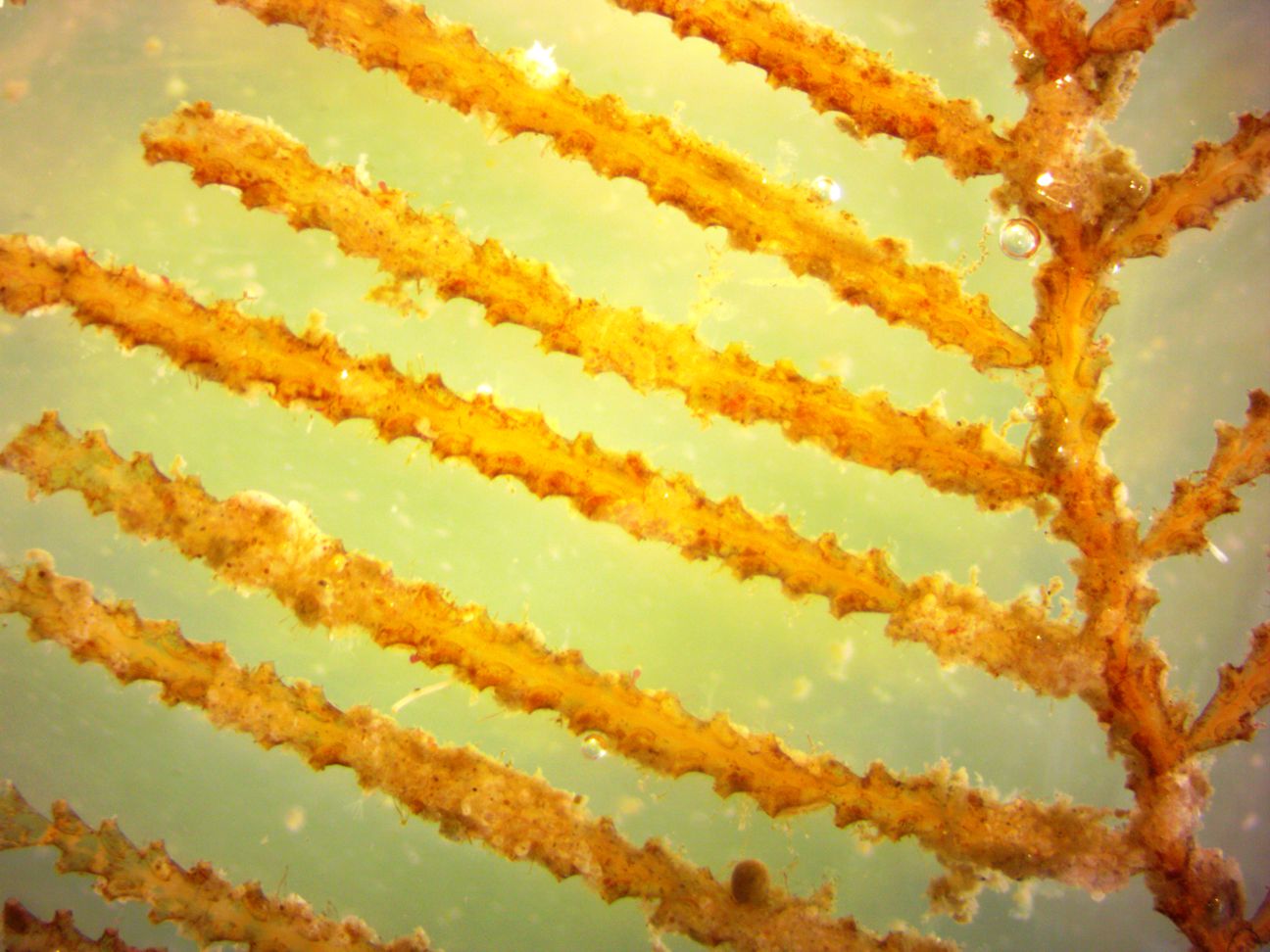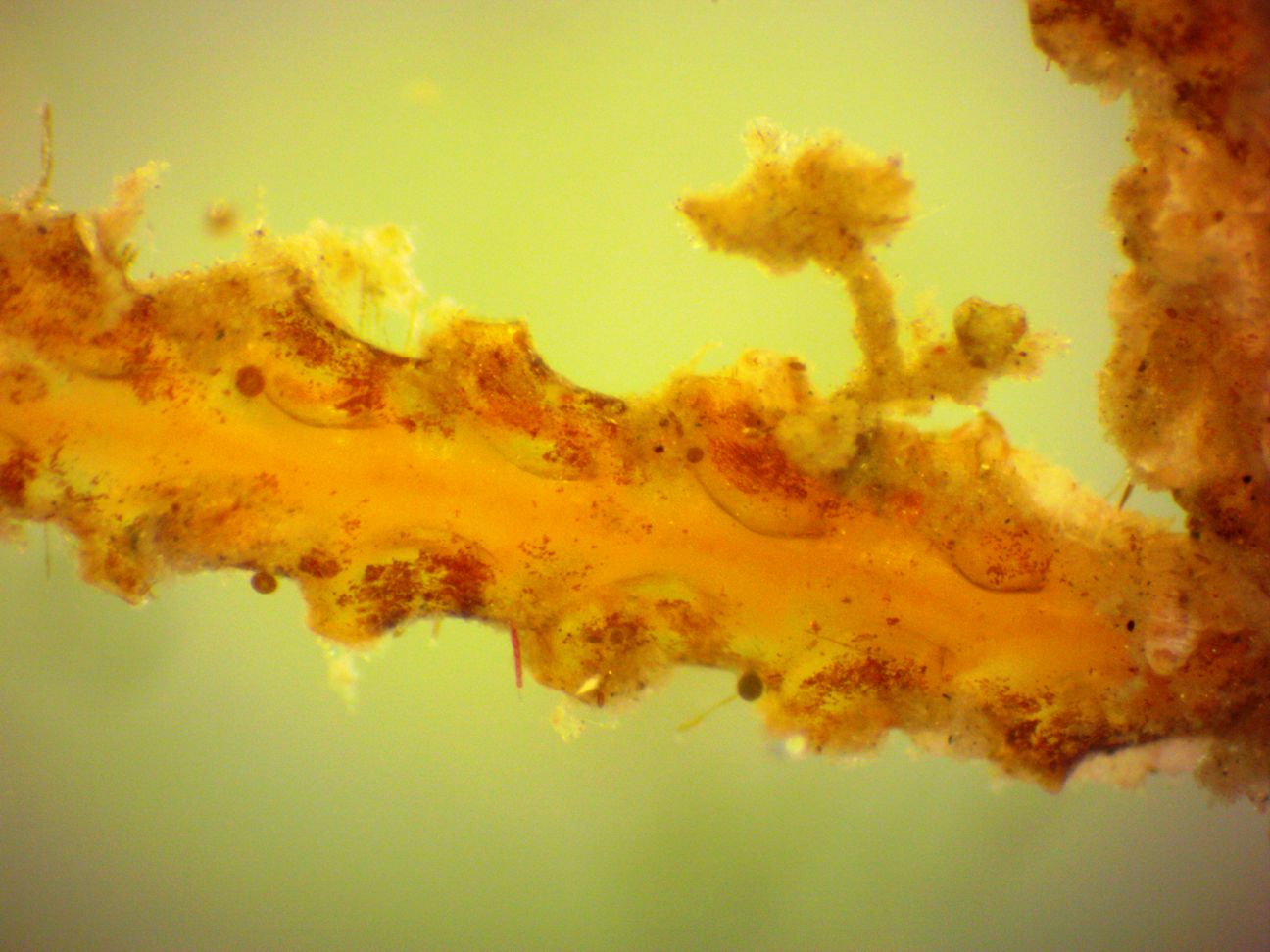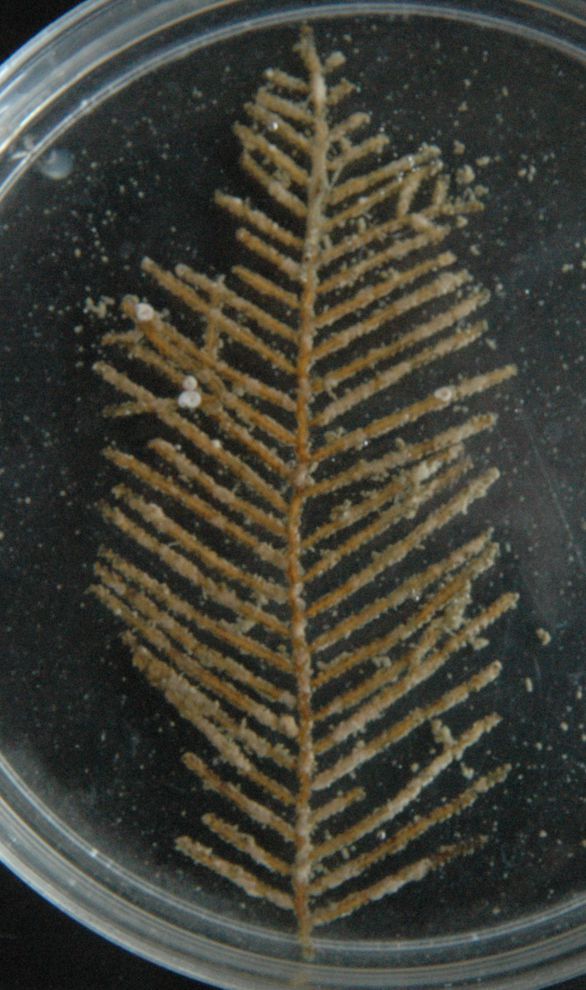Description: This colonial hydroid forms distinctive pinnately-shaped colonies with a thick stem and coarsely branching side stems. The species is thecate, meaning that the polyps are enclosed within a chitinous hydrotheca into which they can completely retract. The hydrothecae are approximately alternating (not paired), protruding at an angle from opposite sides of the stalk, but they are not on individual stalks (photo). The stalk is about twice as wide as the individual hydrothecae (photo). The hydrotheca is longer (deeper) than it is wide, and the opening can be closed by a single operculum which is attached to the hydrotheca on the side closest to the stalk (photo).
How to Distinguish from Similar Species: Several other Abietinaria species (not distinguished in Kozloff's key) have a stalk only about as wide as the individual hydrothecae. Thuiaria sp. has the operculum attached to the side of the hydrotheca opposite the stalk. Sertularia and Sertularella spp. have an operculum consisting of 2-4 flap plus they are more finely branched. Aglaophenia has a similar pinnate colony but it is much more finely branched, has the distinctive corbulae structures for reproduction, and the polyps are on only one side of each branch.
Geographical Range: Alaska to Baja California, Mexico
Depth Range: Low intertidal to 313 m
Habitat: In areas out of direct sun such as under ledges and boulders
Biology/Natural History:
The reproductive
polyps
of this species
produce sessile (attached) medusae. They occur on the main
stalk
and the lower parts of the branches.
| Return to: | |||
| Main Page | Alphabetic Index | Systematic Index | Glossary |
References:
Dichotomous Keys:Carlton, 2007
Kozloff, 1987, 1996 (as Abietinaria spp)
General References:
Harbo,
2011
Kozloff,
1993
Morris
et al., 1980
Scientific Articles:
Web sites:
General Notes and Observations: Locations, abundances, unusual behaviors:

This closer view of the colony shows the polyps
(within their hydrothecae)
along the two sides of each branch. Notice that the branches
are
about twice as wide as the hydrothecae
are.

The individual hydrothecae
can be clearly seen in this closer view. The colony is a bit
fouled
by diatoms and other debris.

In this photo of an individual hydrotheca,
the darker operculum
which is attached on the side nearest the stalk can be seen.
Authors and Editors of
Page:
Dave Cowles (2014): Created original page
CSS coding for page developed by Jonathan Cowles (2007)
Salish Sea Invertebrates web site provided courtesy of Walla
Walla University
